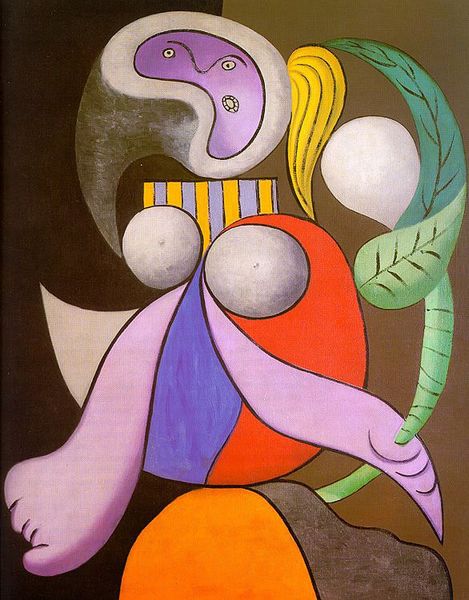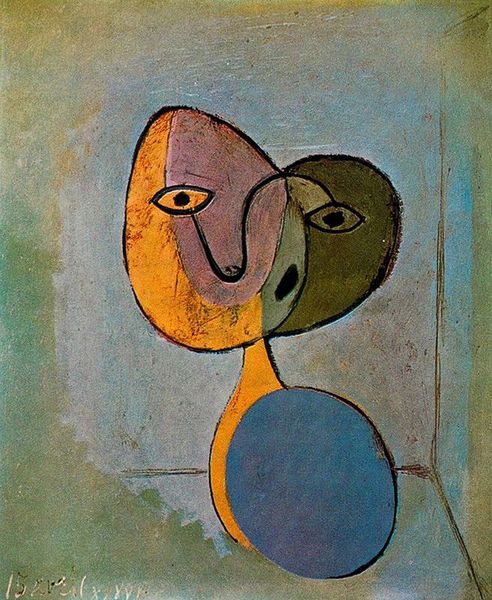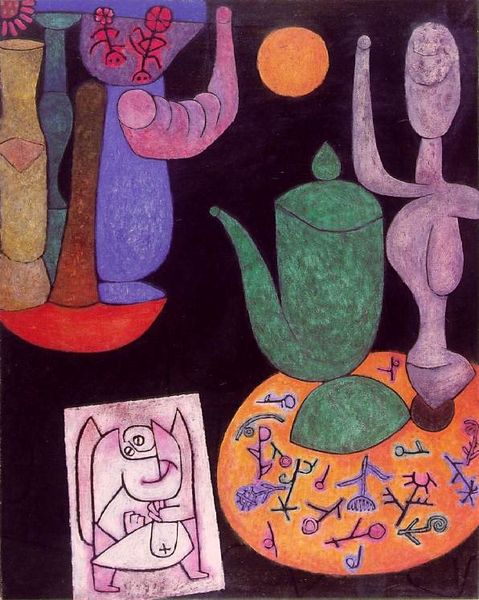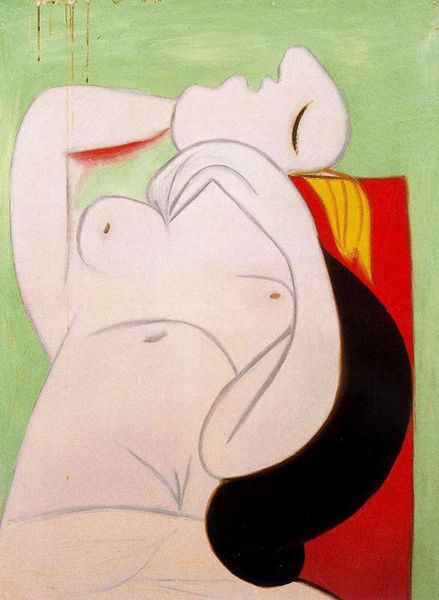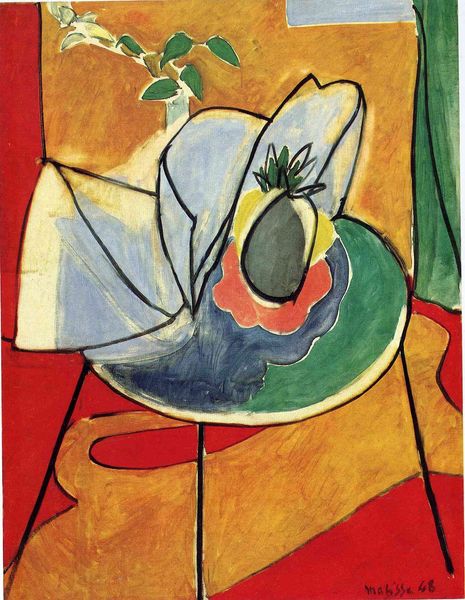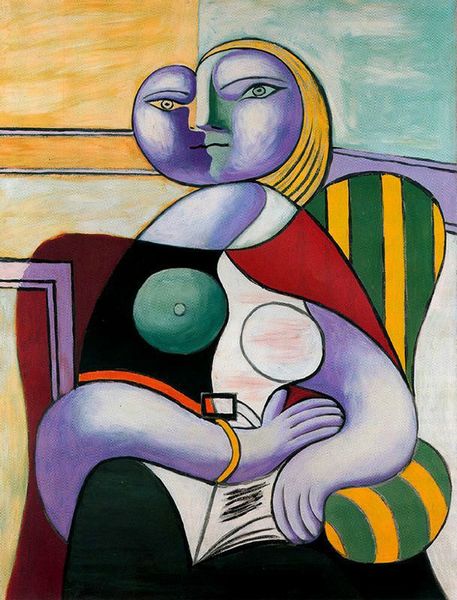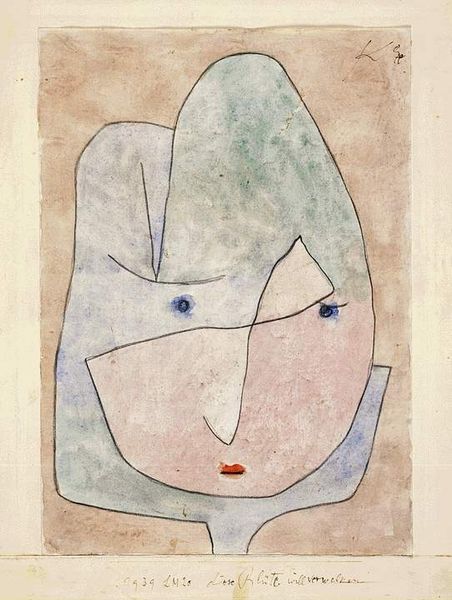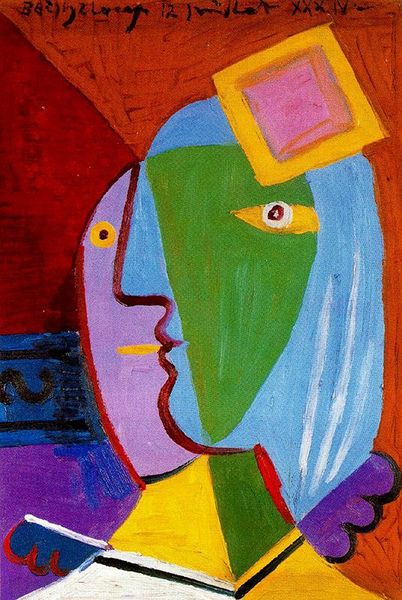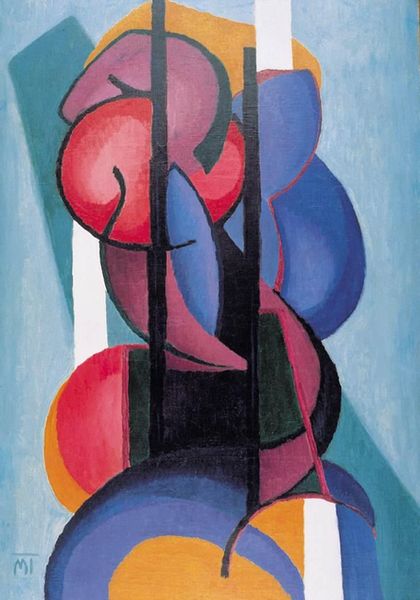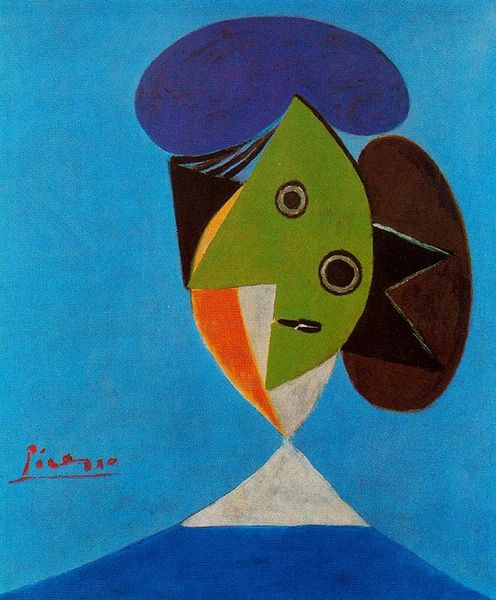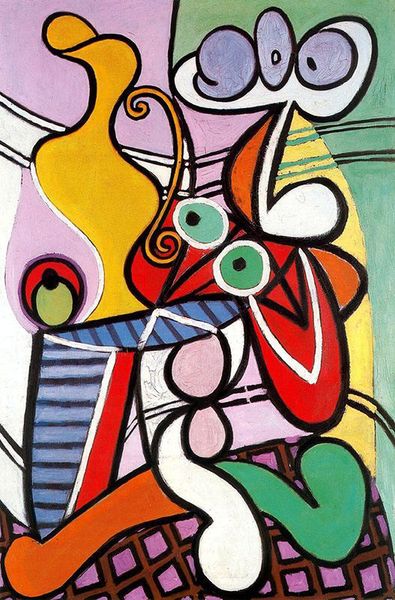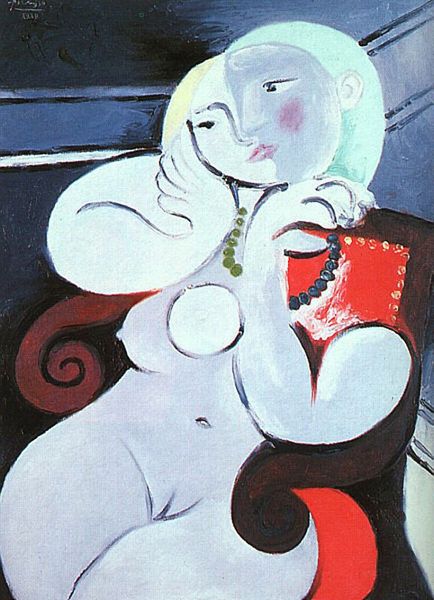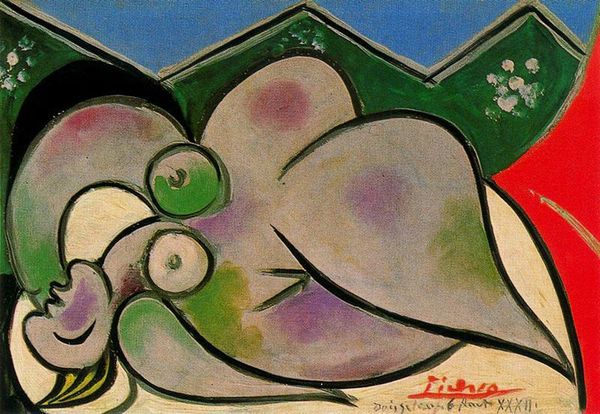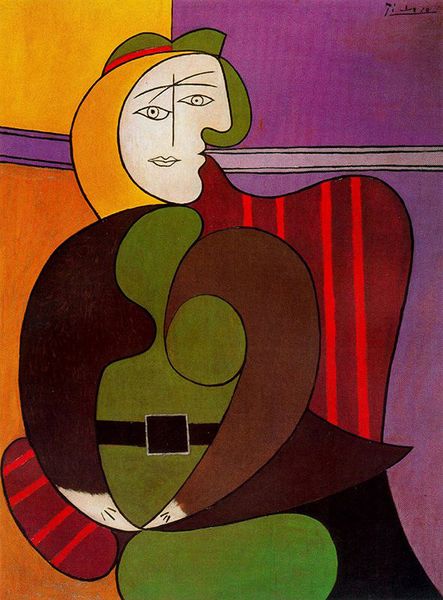
painting
#
portrait
#
cubism
#
abstract painting
#
painting
#
abstraction
Dimensions: 73 x 60 cm
Copyright: Pablo Picasso,Fair Use
Curator: Picasso's "Woman with Bouquet," painted in 1936, immediately strikes me with its unconventional, almost unsettling tenderness. Editor: Yes, the distorted forms, the soft color palette, create an interesting tension. It has this simultaneously soothing and disconcerting quality to it. Curator: We're looking at a canvas where Picasso employs Cubist principles to fragment and reassemble the female form. This painting comes on the heels of a period of intense personal and political upheaval for him. Consider the backdrop: Europe teetering on the brink of war, his own complex relationships…all funneled through this lens of abstraction. It's interesting how he subverts traditional depictions of women, isn't it? Editor: Absolutely. He doesn’t present her as a passive object of beauty, but more of an embodied subject marked by, but not solely defined by, her emotional state. I feel invited into an interiority which doesn't often appear in historical paintings portraying women. And that lone flower she holds? Is it offering or is it a token of a hope that wilts under the weight of impending realities? Curator: Exactly! The ambiguity is the key. He’s rejecting a singular, male-dominated gaze. The '30s were a time of significant re-evaluation in European society regarding gender roles, and Picasso, through his art, reflects some of these anxieties and uncertainties. The vase of flowers becomes part of a wider cultural discourse regarding femininity, nature, and fragility. Editor: It's striking how those pastel tones of pink and green and the off-whites play against the sharp angles of the table, vase, and even her fingers; it lends a fragility and maybe something defiant and discordant in those dark outlines? Curator: I see what you mean. The gentleness is fractured; nothing feels settled. The way he positions her hands too, awkwardly displaying a solitary bloom from the jug--a quiet but forceful symbol of hope, maybe? One surviving bloom plucked away from many to survive alone--much like Europe seemed in that decade, fractured between powers and influences. It feels powerful as both portrait and political statement. Editor: For sure. Thinking about how Cubism challenges viewers to piece together fractured perspectives, "Woman with Bouquet" reflects the fractured state of both the world around Picasso, but also the world of female representation, too. Curator: Yes. And I find that even within its abstraction, a complex humanity resonates. Editor: It certainly stays with you long after you look away.
Comments
No comments
Be the first to comment and join the conversation on the ultimate creative platform.
